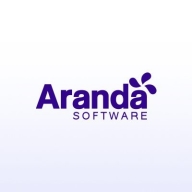

Microsoft Configuration Manager and Aranda Patch Management compete in IT systems management. Microsoft has an edge in scalability and integration given its seamless interaction with other Microsoft tools, whereas Aranda stands out in robust patch management and easier deployment.
Features: Microsoft Configuration Manager provides extensive integration options and comprehensive system management capabilities supporting large-scale deployments efficiently. It offers seamless compatibility with other Microsoft tools and detailed asset tracking. Aranda Patch Management focuses on specialized patch management with effective security updates, simplified user interface, and automation capabilities for operating efficiencies. The key difference lies in the breadth of Microsoft's capabilities versus Aranda's specialized focus on patch management.
Ease of Deployment and Customer Service: Microsoft Configuration Manager's deployment is more complex, requiring significant planning due to its extensive capabilities. Customer service is reliable with strong technical support to assist users throughout the implementation process. Aranda Patch Management offers a simpler deployment process, making it easier to implement solutions quickly with minimal hassle. Its customer service is efficient, providing quick resolutions and support to enhance the user experience.
Pricing and ROI: Microsoft Configuration Manager typically involves a higher initial setup cost but offers substantial ROI through extensive system control and scalability, especially beneficial for large enterprises. Aranda Patch Management, while priced higher due to its specialized functionalities, justifies its cost with a faster deployment cycle and focused security improvements, providing quicker returns on investment. Microsoft's long-term value differs from Aranda's rapid investment returns.
| Product | Market Share (%) |
|---|---|
| Microsoft Configuration Manager | 11.0% |
| Aranda Patch Management | 0.2% |
| Other | 88.8% |

| Company Size | Count |
|---|---|
| Small Business | 20 |
| Midsize Enterprise | 13 |
| Large Enterprise | 64 |
It prevents external attacks and security risks, without interrupting the work of the users and reducing travel and time investment costs; keeping all the workstations in your organization updated, with the latest patches and updates released by solution manufacturers.
Microsoft Configuration Manager streamlines IT management with features such as software deployment, patch management, and automation, centralizing operations for Windows environments. Integration with Microsoft products allows efficient oversight of workstations and servers.
Microsoft Configuration Manager provides comprehensive IT management, offering software deployment, patch management, and application pushing. Automation reduces manual tasks, ensuring consistency across systems. Centralized management enables standardized OS deployments, application updates, and configuration integrity. Integration with Microsoft products facilitates seamless operations, while hardware and software inventory, compliance reporting, and remote control functions enhance IT management. Users seek improvements in application deployment for those without deep scripting knowledge and desire better WSUS control, PowerShell and Intune integration, Linux compatibility, and user interface enhancements. Performance improvements are requested for remote user management and third-party application support.
What features enhance Microsoft Configuration Manager?Microsoft Configuration Manager is widely implemented in organizations to manage Windows workstations and servers. It is essential for deploying operating systems and applications, managing software updates, and conducting hardware and software inventories. The tool is crucial for endpoint and configuration management, ensuring compliance, and automating processes like patching and vulnerability management. Industries such as finance, healthcare, and education rely on Microsoft Configuration Manager to keep systems secure and operational, adapting it to address their specific needs and challenges in maintaining diversified IT environments.
We monitor all Patch Management reviews to prevent fraudulent reviews and keep review quality high. We do not post reviews by company employees or direct competitors. We validate each review for authenticity via cross-reference with LinkedIn, and personal follow-up with the reviewer when necessary.